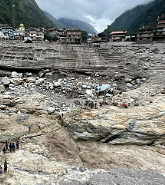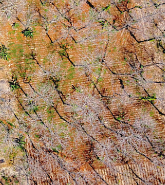The idea that rich, industrialized countries should be liable for paying compensation to poorer, developing ones damaged by climate change is one that has been disputed endlessly at recent international climate conferences.
The fear among rich countries is that they would be signing a future blank check. And the legal headaches in working out the amount of compensation don’t bear thinking about when there are likely to be arguments about whether vulnerable states have done enough to protect themselves.
The question of who pays the compensation bill may prove intractable for some years to come. But the scientific models already exist to make the working out of that bill more transparent.
Some context: in the early years of climate negotiations there was a single focus—on mitigating or (limiting) greenhouse gas emissions. Through the 1990s it became clear atmospheric carbon dioxide was growing just as quickly, so a second mission was added: “adaptation” to the effects of climate change.
Now we have a third concept: “Loss and Damage” which recognizes that no amount of mitigation or adaptation will fully protect us from damages that can’t be stopped and losses that can’t be recovered.
Sufficient self-protection?
The Loss and Damage concept was originally developed by the Association of Small Island States, which saw themselves in the frontline of potential impacts from climate change, in particular around sea-level rise. By some projections at least four of the small island countries (Kiribati, Tuvalu, the Marshall Islands, and the Maldives) will be submerged by the end of this century.
Countries in such a predicament seeking compensation for their loss and damage will have to answer a difficult question: did they do enough to adapt to rising temperatures before asking other countries to help cover the costs? Rich countries will not look kindly on countries they deem to have done too little.
If money were no object, then adaptation strategies might seem limitless and nothing in the loss and damage world need be inevitable. Take sea level rise, for example. Even now in the South China Sea we see the Chinese government, armed with strategic will and giant dredgers, pumping millions of tons of sand so that submerged reefs can be turned into garrison town islands. New Orleans—a city that is 90% below sea level—is protected by a $14 billion flood wall.
But, clearly, adaptation is expensive and so the most effective strategies may be beyond the reach of poorer countries.
Calculating the cost with models
Through successive international conferences on climate change the legal and financial implications of loss and damage have seen diplomatic wrangling as richer and poorer nations argue about who’s going to foot the bill.
But we can conceptualize a scientific mechanism for tallying what that bill should be. It would need a combination of models to discriminate between costs that would have happened anyway and those that are the responsibility of climate change.
Firstly, we could use “attribution climate models” which run two versions of future climate change: one model is based on the atmosphere as it actually is in 2016 while the other “re-writes history” and supposes there’s been no increase in greenhouse gases since 1950.
By running these two models for thousands of simulation years we can see the difference in the number of times a particular climate extreme might happen. And the difference between them suggests how much that extreme is down to greenhouse gas emissions. After this we will need to model how much adaptation could have reduced loss and damage. An illustration:
- A future extreme weather event might cause $100 billion damage.
- Attribution studies show that the event has become twice as likely because of climate change.
- Catastrophe models show the cost of the damage could have been halved with proper adaptation.
- So the official loss and damage could be declared as $25 billion.
While hardly a straightforward accounting device it’s clear that this is a mechanism—albeit an impressively sophisticated one—that could be developed to calculate the bill for loss and damage due to climate change.
Leaving only the rather thorny question of who pays for it.






